|
A "brick wall" on my husband's side has confounded me for many years. While I had a date for the marriage of Nancy E. Kincheloe and John H. Howard occurring somewhere in Kentucky, I could not substantiate it with original documents. The marriage date was the earliest evidence of John's existence, so I was desperate to find out if there were additional clues to help me learn more about him on those records.
The documents I found there have become some of my favorite records! You have to love a hand-written permission note from 1842, written by the father of the bride, complete with witnesses and evidence for where the note was written - I learned so much from this first document, as well as the following two: According to these records, the permission note was written and signed by Philip L. Kincheloe, Nancy's father, in Big Spring, Kentucky, on 2 August 1842. Consent was required because Nancy was sixteen years old.[4] The note was brought to Brandenburg, Kentucky, the next day, August 3rd, by John H. Howard and Robert Stith (possibly Nancy's maternal uncle), where the marriage bond was paid and the license to marry was obtained. Then the marriage was performed by Peter Duncan, MG (Minister of the Gospel) on Thursday, August 4th. I have since learned that Peter Duncan was the Methodist preacher assigned to the Big Spring Circuit (Hardinsburg District), in 1841 and 1842.[5] This leads me to believe that the marriage occurred in Big Spring, where the Kincheloe and Stith (Nancy's maternal side) families were living, rather than in Brandenburg, Kentucky, the Meade County seat. This same family member was also able to provide additional evidence for John and Nancy's marriage from the Kincheloe Family Bible.[6] What a thrill to see this in writing! I was so fortunate to have connected with this relative through Ancestry. The information from these documents greatly expanded my understanding of this family prior to their exit from Kentucky. I am holding out hope that one day I will have additional luck with finding more information about my brick wall groom, John H. Howard. 1. "Kentucky, County Marriages, 1797-1954," database with images, FamilySearch (https://familysearch.org/ark:/61903/3:1:939K-Y6SY-67?cc=1804888&wc=QD3Q-WWF%3A148194401 : 17 May 2018), 004705557 > image 87 of 246; Madison County Courthouse, Richmond, Kentucky.
2. "Kentucky, County Marriages, 1797-1954," database with images, FamilySearch (https://familysearch.org/ark:/61903/3:1:939K-Y6SB-9Y?cc=1804888&wc=QD3Q-WWF%3A148194401 : 17 May 2018), 004705557 > image 85 of 246; Madison County Courthouse, Richmond, Kentucky. 3. "Kentucky, County Marriages, 1797-1954," database with images, FamilySearch (https://familysearch.org/ark:/61903/3:1:939K-Y6SX-7Y?cc=1804888&wc=QD3Q-WWX%3A148193201 : 17 May 2018), 004705554 > image 442 of 546; Madison County Courthouse, Richmond, Kentucky. 4. Find A Grave, database and images (https://www.findagrave.com : accessed 15 June 2018), memorial page for Nancy Edwards Kincheloe Howard (2 Dec 1825-25 Mar 1897) Find A Grave Memorial no. 22997250, citing Kincheloe Cemetery, Wright County, Missouri; photo credit bill (ID 46889067). 5. "Appointments of Preachers of Methodist Church from 1786 to 1845," Methodist Episcopal Church, pages 52 and 54, digitized online, Asbury Seminary, (http://place.asburyseminary.edu/cgi/viewcontent.cgi?article=1000&context=kentuckymethodistbooks : accessed 13 June 2018). 6. Philip L. & Caroline L. Stith Kincheloe Family Bible, loose page, "Marriages," digital image 14, courtesy of Bill Perry, 12 October 2016.
0 Comments
There is a story from my family history which has haunted me since I first read it a few years ago. While saddened at the idea, I have long been acquainted with the concept of an adult making the choice to leave their parents behind in their pursuit of new life on the American frontier. Until I read this story, I had not yet considered that a pioneer parent would leave a child behind (I know! So naive!):[1] As a parent myself, I just can't imagine the horror of having to choose between waiting for my daughter and wrecking my carefully-planned departure, and leaving with the rest of my family, knowing that I would never see her again. I also can't imagine the despair of being left behind. They had such limited ways to communicate at this time - their problem could not be solved with a text, phone call, or email. If they were ever able to find each other again, and actually exchanged letters, it could still take weeks for communication to be received, especially for families living so far away from each other. The poor young girl who was left behind, Esther Smith, was the fifth daughter of my fourth-great-grandmother, Philomela (Smith) Smith Lake and her first husband, Ira Smith.[2] After Ira died, Philomela married James Lake, Jr. and continued to have several more children, including my ancestor, Sabra Almeda Lake.[3] This week's challenge inspired me to learn more about the rest of Esther's story. Fortunately, it appears that her fate also mattered to other descendants of Philomela Smith, because I was able to learn a fair amount about her on FamilySearch. Esther did indeed remain in Canada for the remainder of her years. She married a farmer, Mathew Rosevear, and raised six children.[4] She died in Hamilton, Ontario, on 22 November 1898, at the age of 76.[5] And just for fun, let me mention that one of Esther's daughters, Mary Ellen Rosevear Richard, died ninety years ago, in June of 1928, in Pinckney, Michigan - less than an hour's drive from my home.[6] I love finding distant relatives in my adopted state! I was so relieved to learn that Esther went on to lead a long life with family connections of her own. Knowing that Philomela also lived approximately four more decades after this incident, I am left wondering if they were eventually able to exchange letters over that time, between Utah (and later Idaho), and Ontario? I very much hope so. 1. "Short Biography of Philomelia Smith Lake 1794-1873," Electa Skeen Johnson, 1963; database with images, FamilySearch (https://www.familysearch.org/photos/artifacts/15529244 : accessed 5 June 2018).
2. History of the James Lake, Jr. Family, Janet Franson Jeffrey, Roylance Publishing, Salt Lake City, Utah, 1990, pages 19-20; digitized by the Genealogical Society of Utah, digital copy online, ProQuest: ExLibrisRosetta (https://dcms.lds.org/delivery/DeliveryManagerServlet?dps_pid=IE114153 : accessed 7 June 2018). 3. "Sabra Dixon Called after Long Illness," Deseret Evening News (Utah), Saturday, 18 July 1908, page 24; online database with images, Utah Digital Newspapers (https://newspapers.lib.utah.edu : accessed 7 June 2018). 4. Canada West Census, 1861, Northumberland County, Personal Census, Enumeration District 2, Hamilton Township, Page 59 (stamped), lines 42-49, for Mathew Rosevear (incorrectly indexed as "Roseveer") household; digital image, Ancestry (www.ancestry.com : accessed 7 June 2018). 5. "Ontario, Canada, Deaths and Deaths Overseas, 1869-1946," database with images, Ancestry (www.ancestry.com : accessed 7 June 2018), record for Esther Rosevear, Schedule C, page 271, no. 13, 22 November 1895, Hamilton Township, Northumberland County, Ontario, Canada. 6. "Michigan, Death Records, 1867-1950," database with images, Ancestry (www.ancestry.com : accessed 7 June 2018) > Certificates, 1921-1942 > 203: Tecumseh - Livingston, 1921-1935 > record for Mary E Richard (incorrectly recorded as "Richards"), 1 June 1928, Pinckney, Putnam Township, Livingston County, Michigan. My earliest memories are steeped in the world of the military. My dad was in the Army. I loved to watch him shine his shoes and ready his uniform, while I explored the various pins and badges that went on his hat and shirt. I grew up shopping on base, at the PX (Post Exchange), and most of my early playmates had fathers in the military. I watched with pride as the MP's would salute my father when we drove on and off base. All of my three siblings were born in Army hospitals. Like most people my age, both of my grandfathers also served in the Army during World War II. Military service was commonplace in my life. Even my dad's two brothers were in the Air Force and the Navy, so not only did I learn the states and their capitals - I also learned the names of their military bases while keeping track of where my cousins were living. This is all to say that the military played a large role in my life, and I owe the upward mobility of my family to the military participation of my family members. That said, as a genealogist (as well as a pacifist), I feel very conflicted about wars. I love the fact that we are able to access rich information from military service records, draft cards, and bounty land records. However, in addition to the devastating loss of life on all sides, the loss of records due to war - whether it is a Georgia courthouse burning down during the Civil War, a church in Scotland's records being destroyed during a battle for religious control, or an entire Jewish community having its records wiped out during the Holocaust - is heartbreaking to consider. Although my paternal grandpa served honorably, and was proud of his service, he was recorded saying that he was not "military minded," and that his initial interest in serving in the Army was motivated more by the promise of having more clothing to wear, than a desire to fight. He also knew about the dangers of war, having grown up hearing stories from his mother about his uncle Frank, who served in World War I.
I have listened to audio recordings of my great-grandma talking about the last time she saw Frank.[4] He had told her that if he were drafted, he knew he would never come back. She saw him off at the train station in Richfield, Utah on Thursday, the 27th of June, on his way to Camp Lewis in Washington State.[5] Decades after the fact, her voice broke with the emotion of recalling his last words to her: "I'll never see you again." It was true, he never would. Private Frank Jorgenson was killed in action in France on 12 October 1918, just two short months after departing from U.S. soil, and one month before the war ended.[6] Ida never fully recovered from his loss. I can only imagine how Ida felt when her son, my grandfather, was called up and sent to Fort Lewis during World War II. She must have been terrified to lose her son in the same way that she lost her brother. Ida ended up sending four of her sons to fight in that war - fortunately all of them returned home safely. During WWII, a cosmic turn of events brought my grandfather to Argonne, France - the same place where Frank died. The photos below are from his visit to Frank's grave in the Meuse-Argonne American Cemetery in 1944 or 1945. My grandpa was three years old when Frank died. As you can see from the photo, it must have been very meaningful to visit the grave of his uncle - the man for whom his mother had grieved most of his life, and whose body never returned home. I'm sure it held even more meaning since he had been in the midst of surviving the fighting in France since his arrival at Normandy in June 1944. At some point Frank's 40th Division must have been combined into the 77th Division, which had already been fighting in France since April.[9] Frank's final assignment was in Company A of the 308th Infantry Regiment of the 77th. This regiment was part of what became famously known as the "Lost Battalion," which was hit very hard as part of the Meuse-Argonne Offensive in October 1918. A comprehensive history of the 77th and a list of its casualties, including Frank, can be found here. What is amazing is that he lived past the very worst of the fighting (2-8 October), only to be killed in action just days later, on October 12th. As sad as it has been to research my great-great uncle Frank, I am grateful for records relating to his military service. While I knew a fair amount about the history of his early years, the only information I have been able to find about him as an adult thus far is from these records. I know how much his loss affected his family, but I have appreciated being able to learn more about him through his military service. May he, and all of our fallen soldiers, live on in our hearts and minds. *Written with appreciation to Idajean Aldous for her Memorial Day post about Frank on our Ogilvie family Facebook page (29 May 2017), which inspired me to learn more about his service. 1. "U.S., Army Transport Service, Passenger Lists, 1910-1939," database with images, Ancestry (www.ancestry.com : accessed 2 June 2018), entry for Erick F Jorgenson, departure date 9 August 1918, no. 73(173); citing National Archives and Records Administration (NARA), "Records of the Office of the Quartermaster General, 1774-1985," Record Group 92, Roll 516.
2. "U.S., World War I Draft Registration Cards, 1917-1918," database with images, Ancestry (www.ancestry.com : accessed 2 June 2018), card for Eric Frank Jorgenson, no. 25 (penned), Local Draft Board I, Richfield, Sevier County, Utah; citing NARA, "World War I Selective Service System Draft Registration Cards, 1917-1918," Record Group M1509, Roll 1984054 . 3. "Call to the Colors Reaches Many Boys" Richfield Reaper (Utah), Saturday, 29 June 1918, page 1; online database with images, Utah Digital Newspapers (https://newspapers.lib.utah.edu : accessed 2 June 2018). 4. "Memories of Kendal M. Ogilvie's Early Years," Ida Jorgensen Ogilvie, audio recording, discussion of Frank Jorgenson approximately at minutes 13 and 20 of 48 minutes, recorded by B. Eileen Ogilvie Ipson, date unknown; digital copy in personal collection of the author, 2 June 2018; and "Childhood Memories of Ida Jorgensen Ogilvie," Ida Jorgensen Ogilvie, audio recording, recorded by B. Eileen Ogilvie Ipson, date unknown; author does not hold digital recording, but it has been incorporated into the film "Ida," created by Edward Ormsbee, discussion of Frank Jorgenson at approximately minute 49 of 53 minutes, viewed on YouTube (https://www.youtube.com/watch?v=2WkQW0lFd_s : accessed 5 June 2018). 5. "Call to the Colors..." Richfield Reaper (Utah), Saturday, 29 June 1918, page 1. 6. Erick F Jorgenson, page 5, Idaho World War I Dead, AEF (Armed Expeditionary Forces), Series: "Compiled Data on Casualties of the American Expeditionary Forces by State or United States Possession, 1917-1919," Record Group 407: Records of the Adjutant General's Office, 1905-1981, National Archives at College Park, College Park, Maryland; imaged online, National Archives Catalog (https://catalog.archives.gov/id/34389584 : accessed 4 June 2018). 7. "News Items Given Here in Brief," Franklin County Citizen (Idaho), 21 November 1918, page 4, column 3; online database with images, "Digital Archives of the Franklin County Citizen," Community History Archive, Advantage Preservation (http://franklincounty.advantage-preservation.com : accessed 3 June 2018). 8. "Mountain States have 29 Names in Casualty List" Salt Lake Herald (Utah), Saturday, 21 November 1918, page 6; online database with images, Utah Digital Newspapers (https://newspapers.lib.utah.edu : accessed 2 June 2018). 9. History of the Seventy Seventh Division: Designed and Written in the Field - France, The 77th Division Association, 1919, New York City, New York, Death of Private Eric F Jorgenson, page 119; digital copy online, ProQuest: ExLibrisRosetta (https://dcms.lds.org/delivery/DeliveryManagerServlet?dps_pid=IE928497& : accessed 2 June 2018). While I have studied French and Latin, I have very little experience with German, and my husband's grandfather's heritage is entirely from Germany. Fortunately, they all arrived in Indiana during the 1800s, so I have been able to go back a few generations using American records. I've played around with German records a little bit, but like I said in my last post, doing research in another country can be very difficult. At some point we will get serious and hire a professional researcher in Germany to help us go further. The prompt for this week reminded me of one of my early learning experiences with this family on my journey toward becoming a genealogist. As a stay-at-home mom with small children, it took me a long time to feel like I had the time or money to justify a membership with Ancestry. So I used Find A Grave a lot for my research. I had pretty good luck with several people on my husband's side, but there was one relative whose grave I just could not find. His name was William Rudolph.
I did eventually get that coveted Ancestry membership, and finally circled back around to this brick wall. I came to embrace the theory that, while I could not locate a grave for "William Rudolph," perhaps the listing for a "Wilhelm Rudolph" in Fort Wayne might actually be our man.[1] Why hadn't it occurred to me before?? After all, he was born in Germany and arrived in the U.S. as an adult - why wouldn't he continue being called by his German name? I began to investigate him in earnest. I was quickly able to confirm that William and Wilhelm had the same death date - 2 December 1900 - after locating his death certificate, probate records, and two obituaries.[2,3,4,5] The death certificate and obituaries held additional evidence - William Rudolph's funeral was at St. John's Lutheran church, and he was buried in their cemetery. Wilhelm Rudolph's Find A Grave memorial was for a grave located at St. John's Lutheran Cemetery. Even better, I learned that St. John's Lutheran church was founded by German immigrants in 1853.[6] Success! Just in case I needed any more support for my theory, this page from William Rudolph's will shows that William Rudolph and Wilhelm Rudolph were considered to be the same person:[7] I certainly loved seeing that signature! By the way, if you would like to learn more about old German handwriting, this web site provided excellent assistance for understanding how the above signature should be read as "Wilhelm Rudolph," instead of "Milfulm Butolgf." It all seems so simple looking backward, now that this little mystery is far behind me, but not realizing that this man's name was recorded by the cemetery in another language really threw me for quite some time. This experience taught me that it is so important to think of our ancestors in their own historical and geographical context. We must consistently take the time to stop, put away our assumptions about how things work now, and put ourselves in their place and time. Of course this German immigrant often went by William Rudolph when operating in American society, but in his German Lutheran community (and in other cases), he continued to be Wilhelm. The use of each name depended on the context. The best part of this story is that by finally identifying William's burial location, I was also able to confirm that I had found the memorial pages of his first wife, Maria Catharina, and their infant son, Carl Theodor Rudolph, who both died in 1873.[8,9] P.S. While working on this post, I reached out to the couple who took photos of Maria Catharina Rudolph's gravestone, hoping they might also have a photo of Wilhelm's grave. I learned that, although the cemetery has a listing for our Wilhelm Rudolph, they have not yet been able to locate the grave. The search continues! 1. Find A Grave, database and images (https://www.findagrave.com : accessed 18 May 2018), memorial page for Wilhelm Rudolph (1830–2 December 1900), Find A Grave Memorial no. 136072229, citing St. John's Lutheran Cemetery, Allen County, Indiana.
2. "Indian, Death Certificates, 1899-2011," database with images, Ancestry (www.ancestry.com : accessed 18 May 2018), entry for William Rudolph, 2 December 1900, Allen County; citing Indiana Archives and Records Administration (Indianapolis), Death Certificates, Year: 1899 - 1900, Roll: 02. 3. "Indiana, Wills and Probate Records, 1798-1999," Allen County, Nowek, Edward - Stahlhut, Charles, Will for William Rudolph, signed 21 March 1899, recorded 13 December 1900, Ancestry (www.ancestry.com : accessed 16 May 2018); citing Allen Circuit Court, Allen County, Indiana, Record of Wills number 10, pages 563-4. 4. "William Rudolph," (Indiana) Fort Wayne Daily News, Monday, 3 December 1900, page 4, column 5; Newspapers.com (www.newspapers.com : accessed 17 July 2017). 5. "Rudolph," (Indiana) The Fort Wayne Sentinel, Monday, 3 December 1900, page 6, column 2; Newspapers.com (www.newspapers.com : accessed 17 July 2017). 6. "Saint John's Evangelical Lutheran Cemetery," digital image of pamphlet, page two of four, published on St. John Lutheran Church web site; (http://www.stjohnluth.com/wordpress/wp-content/uploads/2012/03/Cemetery-Brochure.pdf : accessed 18 May 2018). 7. "Indiana, Wills and Probate...," Allen County, Will for William Rudolph, second page (1399 of 2638), Ancestry. 8. Find A Grave, database and images (https://www.findagrave.com : accessed 18 May 2018), memorial page for Maria Catharina Rudolph (19 December 1841–18 March 1873), Find A Grave Memorial no. 136072202, citing St. John's Lutheran Cemetery, Allen County, Indiana; photo credit Jeffrey Gay. 9. Find A Grave, database and images (https://www.findagrave.com : accessed 18 May 2018), memorial page for Carl Theodore Rudolph (1873–13 April 1873), Find A Grave Memorial no. 136072179, citing St. John's Lutheran Cemetery, Allen County, Indiana; photo credit Jeffrey Gay. This week, in honor of Mother's Day, I'd like to share more about my maternal line. Although they each had their own unique personalities, the women in this line were all hard-working, intelligent, industrious, creative, loving people who always found a way to laugh during difficult times. I seem to have inherited both my nose, and the "twinkle in my eye," through this line. [photos below are from my personal collection] I have followed this line to Scotland. Not only is it notoriously difficult to research maternal lines, which usually change surnames with each generation, it can also be challenging to follow your ancestry in a new country. While I am fortunate that Scottish records often include maternal surnames, the Scottish government has retained control over their records, so images of original documents are only available through Scotland's People on a pay-per-view basis, via a subscription with Find My Past, or on microfilm at the Family History Library in Salt Lake City, depending on what you are searching for. That is to say, you will not find images of original records on Ancestry or FamilySearch - you will need to go to beyond these sites if you want to go deeper than indexed information. My mother's mother's mother's mother was born on 13 October 1859 in Port Glasgow, in Renfrewshire, which was a small port city on the River Clyde, on the Western side of Scotland.[1] You might remember from my "Strong Woman" post that Mary Maud Coats was the young child who was brought to the United States (with a goat!) by her paternal aunt, Mary Coats Bergstrom. Although she had no memory of her mother, Mary knew her maiden name: Isabella Forrest[er].[2] Isabella, my great-great-great-grandmother, was the end of my maternal line for many years. It was through Scotland's People that I was finally able to corroborate the story of Mary Maud Coats and her aunt, Mary Coats Bergstrom, and begin to learn more about my Scottish family. [Unfortunately, because I am following their terms and conditions, I am not able to share images of what I found.] It was interesting to see what differed from the story Mary had heard as a child (and recounted as an older woman), and what remained true through the years - the essence of the story was correct, but there were several discrepancies with dates, including her own birth date![1,2] I can't tell you how exciting it was to finally view Mary's birth registration from 1859, which recorded information personally reported by her mother, Isabella.[4] I learned the name of the street where the family was living at that time, and confirmed that her father, Andrew, was a shoemaker and a journeyman. I also located the death registration for Isabella Forrester Coats.[5] This document recorded information reported by her husband, Andrew, who stated that she had suffered from tuberculosis (recorded as "phithisis") for about eight months, and died just prior to Mary's first birthday, on 1 October of 1860, at the young age of 28. It was from this record that I finally had evidence for the maiden name of Isabella's mother: Janet Sherrow. A clue! Using this information, I was able to locate the death registration of the widowed Janet Forrester, who died less than three years after her daughter, after being paralyzed for "several years."[6] Her death was reported by her son-in-law, Andrew Coats. Interestingly, her maiden name was recorded as "Shirra" in this document, which helped explain why I was not able to identify a single record for anyone with the surname of "Sherrow" on Scotland's People. Not only did this information clear up her father's name and surname (William Shirra was a "spirits dealer" - can't wait to learn more about this guy!), it also provided the maiden surname of her mother: Mary Fulton. So far, records indicate that Janet Shirra came from Glasgow, and that she was not James Forrester's first wife, which is opening up a whole new line of inquiry.[7] After so many years of being stuck at Isabella Forrester, it was exhilarating to move two generations further along my maternal line, which now looks like this: I also learned some unexpected information from my search on Scotland's People. Just over one month prior to my great-great-grandmother's birth, her father, Andrew, reported a tragic death: his five-year-old daughter, Mary Coats, died after three weeks of "inflammation of the bowels."[8] I can't help but imagine the grieving parents, one month away from the arrival of their fourth (or possibly fifth) child, losing their darling five-year-old so suddenly. They must have named their new baby "Mary" in honor of the child they had just lost. Isabella, with a paralyzed mother to care for, the loss of this child, and the stress of a new baby, contracted tuberculosis - the "white plague." Andrew wrote to his sister living in America, and told her of Isabella's dying wish:[9] I found the family in the 1861 census, taken in April, about seven months after Isabella's death - Andrew Coats, his daughters Janet, Jane and Mary, and his sister Mary Coats [Bergstrom], seaman's wife.[10] I'm not sure of how long Mary lived with them, but by September of 1863, she and her niece, Mary Maud, and her husband had traveled to Utah Territory by wagon train.[11] As I think about this line of women on Mother's Day, I appreciate their strength and willfulness through various forms of adversity. I've learned a little bit about what it took to survive in early 19th century Scotland - how precious and fleeting life was. I mourn the early death of Isabella, who never learned about how well things would turn out for her infant daughter - that she went on to live a long, full life and brought six children to adulthood, along with many, many descendants. I think of the sisters that Mary Maud never knew - I would love to learn more about what happened with them, and if their descendants can be found among the thousands of my autosomal DNA matches. I look forward to learning more about Janet Shirra's story - about her marriage, other children, how long she battled paralysis, and more about her mother, Mary Fulton. I also am so appreciative of Mary Coats in her role as aunt and adoptive mother - this story could have taken a very different course had it not been for her efforts. I am, most of all, so grateful that I am now able to share more about this story with my mother and my own daughter (as well as many others who share this maternal line with me). I'm wishing you all a very happy Mother's Day, and the best of luck in your own maternal line research - it can be challenging, but is well-worth the effort! 1. Statutory Birth Register, County of Renfrew, Registration District: 574 (Parish of Port Glasgow), 1859, page 95 (printed), number 283, for Mary Coats, 13 October; database online with images, 1859 COATS, MARY (Statutory registers Births 574/283), Scotland'sPeople (www.scotlandspeople.gov.uk : accessed 3 February 2017); citing National Records of Scotland, Edingburgh, U.K.
2. "Autobiography of Mary Maud Coats Bergstrom Stratford: A Pioneer of 1863," 4 September 1922, Daughters of Utah Pioneers, Camp 33, recorded by Ethel Stratford Skeen; digital copy in personal collection of the author, East Lansing, Michigan, 2018. 3. "Obituary: Mary M. Coats Stratford," Salt Lake Telegram (Utah), Friday, 20 February 1942, page 26; online database with images, Utah Digital Newspapers (https://newspapers.lib.utah.edu : accessed 12 May 2018). 4. Statutory Birth Register, Registration District: 574, 1859, number 283, for Mary Coats. 5. Statutory Death Register, County of Renfrew, Registration District: 574 (Parish of Port Glasgow), 1860, page 54 (printed), number 162, for Isabella Coats, 1 October; database online with images, 1860 COATS, ISABELLA (Statutory registers Deaths 574/162), Scotland'sPeople (www.scotlandspeople.gov.uk : accessed 22 June 2017); citing National Records of Scotland, Edingburgh, U.K. 6. Statutory Death Register, County of Renfrew, Registration District: 574 (Parish of Port Glasgow), 1863, page 25 (printed), number 73, for Janet Forrester, 2 April; database online with images, 1863 FORRESTER, JANET (Statutory registers Deaths 574/73), Scotland'sPeople (www.scotlandspeople.gov.uk : accessed 12 May 2018); citing National Records of Scotland, Edingburgh, U.K. 7. Records relating to Janet Shirra Forrester I've found so far include: OPR marriage registration between herself and John Forrester indicating the marriage was to take place in Glasgow in 1831; 1841 census listed two sons (John and Samuel), of John Forrest[er] who were born earlier than the 1831 marriage, and that her birth occurred outside of the county of Renfrew; 1851 census indicated her place of birth as "Lanarkshire Glasgow;" and death registration (cited above), had a discrepancy in age between both census records. More work to be done here. 8. Statutory Death Register, County of Renfrew, Registration District: 574 (Parish of Port Glasgow), 1859, page 40 (printed), number 118, for Mary Coats, 31 August; database online with images, 1859 COATS, MARY (Statutory registers Deaths 574/118), Scotland'sPeople (www.scotlandspeople.gov.uk : accessed 12 May 2018); citing National Records of Scotland, Edingburgh, U.K. 9. "Autobiography of Mary Maud Bergstrom Coats Stratford," page 1. 10. 1861 census of Scotland, County of Renfrew, Registration District: 574 (Parish of Port Glasgow), Enumeration District (ED): 7 (Burgh of Port Glasgow), page 8 (of 22, stamped), schedule no. (household): 46, for Andrew Coats, Janet Coats (incorrectly recorded as "Janent"), Jane Coats, Mary Coats, and Mary Coats; database online with images, 1861 COATS, ANDREW (Census 574/7/8) Page 8 of 22, Scotland'sPeople (www.scotlandspeople.gov.uk : accessed 12 May 2018); citing National Records of Scotland, Edingburgh, U.K. 11. Individuals in this Company, William B. Preston Company (1863), for Mary Maud Coats, Mary Coats Bergstrom, and Carl M. Bergstrom; online database, Mormon Pioneer Overland Travel (https://history.lds.org/overlandtravel/companies/241/william-b-preston-company-1863 : accessed 12 May 2018). Sorry I'm a little late with this one - I was at the National Genealogical Society's annual meeting in Grand Rapids most of last week. What a whirlwind! I hope to post more about that, soon. For this week's post I am zooming in on my great-great-grandfather, Zadock (Zadok or Zadoc - spellings vary) Conrad Mitchell. He was the elderly man seated in the photo below. His wife, Louisa Winegar Mitchell, was seated to his left, and they were surrounded by their children, including my great-grandfather, Vernon Claude Mitchell, seated on the right. I've viewed this photo several times through my life, so I recognized it when I found this copy on FamilySearch a few years ago. Zadock was the son of Benjamin Mitchell and Caroline Conrad. Benjamin was a stone cutter and early Utah pioneer - I hope to write a post about him at some point. He was also a polygamist, with several wives and over fifty children. However, Zadock had only one full sibling, Amanda Elizabeth Mitchell Harman. His mother, Caroline, passed away less than four months after his birth. I believe he was given his unusual name after Zadock Knapp Judd, the brother of one of his father's other wives, Lois Judd Mitchell. Zadock was a stonecutter himself - he and his father both worked on the construction of the Salt Lake Temple and other significant buildings in Salt Lake City.[1] Like many people of his time, he contracted tuberculosis, and died at the age of 65.[2] I don't know if his work as a stonecutter also weakened his lungs, but I'm sure all the dust and debris flying through the air around him didn't help his condition. I don't have many photos of him, so I was looking for more on FamilySearch last year, which is where I found this close up of him from the photo I posted above: I must have looked at this image several times before I realized that Zadock was missing his left eye, or, if it was still intact, it was badly damaged. I also found other earlier photos of him, which show him with both eyes intact. I've never heard anything about his missing an eye from other family members. My grandmother was born about a month prior to his death, so she had no memories of him. I can only imagine that his eye was injured while he was cutting stone. I did search through some newspapers to see if an accident was reported in the press (and was interested to find that he was involved in local politics, and also called as a witness during a polygamy trial in 1886), without success. I'll be sharing this post with my family - perhaps one of my many distant cousins will know more? I'll certainly post an update if I find more information. 1. "Zadoc C. Mitchell, Native of City, Dies," Salt Lake Tribune (Utah), Tuesday, 27 February 1917, page 5; online database with images, Utah Digital Newspapers (https://newspapers.lib.utah.edu : accessed 7 May 2018).
2. "Utah, Death and Military Death Certificates, 1904-1961," database with images, Ancestry (www.ancestry.com : accessed 7 May 2018), entry for Zadock Conrad Mitchell, 26 February 1917, Salt Lake County; citing "Death Certificates, 1904-1961," Series Number 81448, Utah State Archives, Salt Lake City, Utah. I was an Army brat. I moved at least five times before my eighth birthday. The last move was to Utah, where both of my grandparents lived, and where, I later realized, my family on both sides had been solidly rooted since the mid-eighteen hundreds. Despite this, the close-knit community my parents chose was foreign to me. I often felt like an outsider because I wasn't born there, none of my ancestors lived there, and, unlike many of my classmates, I didn't go to school with my cousins. That said, it was a really beautiful place to grow up, tucked between the Wasatch Mountains and the Great Salt Lake. We had a lot of freedom to roam the neighborhood, which had so many interesting places to explore. Mountain streams tumbled through steep gullies, which we would wade through in the hot summer months, and sled down on sunny, snowy, winter days. When we were old enough, we extended our range further down the hill, riding our bikes to the town cemetery. The cemetery was essentially a city park for our community. It wasn't a creepy place that we avoided - quite the contrary! People would routinely go for walks, ride their bikes, walk their dogs, or even picnic there. The shade and cool, green grass were welcoming in the dry desert heat. I loved to wander around the stones, reading the names and inscriptions, and thinking about the people who had come before us. My favorite gravestones were the little sandstone lambs which were placed for babies and children - they were heartbreakingly sweet. I came to recognize the surnames of my classmates (e.g. Adams, Barnes, Blood, Egbert, and Layton), and discern older pioneer gravestones from more modern markers.
In my teen years, I discovered that the cemetery was also a night-time hot spot in the summer. Apparently it was a tradition for teenage boys to have bottle rocket wars there. They would shoot these illegal fireworks at each other from behind the gravestones, using them as shields when the other side returned fire. This fascinated and frightened me in equal measure. My parents eventually moved away from their home near the cemetery, but I still like to drive by whenever I happen to be in town. One visit was particularly meaningful. In the course of researching my husband's family (he grew up far away from me), I learned that several of his ancestors were buried in that very cemetery. We were able to locate their graves and share the story of this family with our children. The place where I'd grown up walking my dog and riding my bike, actually held the remains of and tributes to the ancestors of my future husband and children. My family had belonged there all along, I just hadn't known it until then. Let me start off with a warning for this one: the following newspaper articles describe a tragic death in graphic detail - please proceed at your own discretion. The Tuesday, August 17th, 1920, editions of Wasatch Front newspapers, such as the Salt Lake Telegram and the Ogden Standard Examiner, predicted the possibility of rain showers later that day. The high temperature was 95 degrees, and from personal experience, I'm guessing it was unusually humid. Although it does not rain often in the desert climate of Utah, the region is known for monsoon weather in July and August. Powerful storms can sweep in quickly, with wind, lightning, and torrents of rain, which is exactly what would happen later that day. These predictions seem mild in comparison to what actually occurred.
Vernon Ronald Mitchell was the eldest brother of my grandmother, Lila Mitchell Ogilvie. I wrote about this family for Week 5: In the Census, although 1930 was ten years after Vernon's death. My grandma often spoke about the loss of her brother, and how devastated the family was about his tragic death. She was only three years old when he died (she was accidentally named "Laura" in the Salt Lake Telegram article), but she, and I imagine her entire family, carried his memory for many, many decades. I was able to pinpoint the location of Vernon's death: Orange Street, between 200 and 300 South, just West of Redwood Road in Salt Lake City. It was a little over one mile from the Mitchell home on Iola Avenue. In the 1920 census there were four homes between 200 and 300 South: (204) Alexander Winter's family, (246) Ludwig Pollei's family, (260) Fredrick Rombach's family [all from Germany], and (280) George Spliethof, from Holland.[6] That block of Orange Street, part of the Lake Breeze subdivision, barely escaped destruction by a large freeway interchange, and is now an industrial area. The irrigation ditch is gone, and there are no trees to speak of. There is no hint of this tragic event - no memory of small houses, immigrant families, summer storms, or enterprising young paperboys. By the way, I scrolled to the front page of the Ogden Standard Examiner from the day the article was posted about his death, and was surprised to find this historic headline. A good reminder that you just never know what you might happen upon in your research: 1. "Weather," Salt Lake Telegram (Utah), Tuesday, 17 August 1920, page 1, banner; online database with images, Utah Digital Newspapers (https://newspapers.lib.utah.edu : accessed 18 April 2018).
2. "Weather," Ogden Standard Examiner (Utah), Tuesday, 17 August 1920, page 1, banner; online database with images, Utah Digital Newspapers (https://newspapers.lib.utah.edu : accessed 18 April 2018). 3. "Telegram Boy Killed by Lightning," Salt Lake Telegram (Utah), Wednesday, 18 August 1920, page 9; online database with images, Utah Digital Newspapers (https://newspapers.lib.utah.edu : accessed 18 April 2018). 4. "Lightning Kills Newspaper Boy," Ogden Standard-Examiner (Utah), Wednesday, 18 August 1920, page 3; online database with images, Utah Digital Newspapers (https://newspapers.lib.utah.edu : accessed 18 April 2018). 5. "Utah, Death and Military Death Certificates, 1904-1961," database with images, Ancestry (www.ancestry.com : accessed 18 April 2018), entry for Vernon Ronald Mitchell, 17 August 1920, Salt Lake County; citing "Death Certificates, 1904-1961," Series Number 81448, Utah State Archives, Salt Lake City, Utah. 6. 1920 U.S. census, Salt Lake County, Utah, population schedule, Salt Lake City (Precinct 40), ED 119, sheets 18A and 19B (penned), [dwellings/families not enumerated]; imaged at Ancestry (www.ancestry.com : accessed 19 April 2018); citing National Archives microfilm publication T625, roll 1866. I don't have any unmarried aunts to speak of... I do have two distant "aunts" to whom I owe an enormous genealogical debt: Jetta Stewart Brunson and Electa Skeen Johnson - who were both childless, but married. So I had to dig a little deeper for this topic, and ended up over on my husband's line. His grandmother was from Madison County, Iowa. I dearly loved her, and continue to have a great affinity for her family history. I often think of the characters from "The Music Man" ("Would you like to give Iowa a try?"), when I study her family - their ages and migration patterns seem to perfectly fit several of our national commonplaces (and mid-20th century musicals). And WOW - after taking another look at her Wynkoop line, I will see your "maiden aunt" and raise her by two - PLUS a bachelor uncle! Read on... 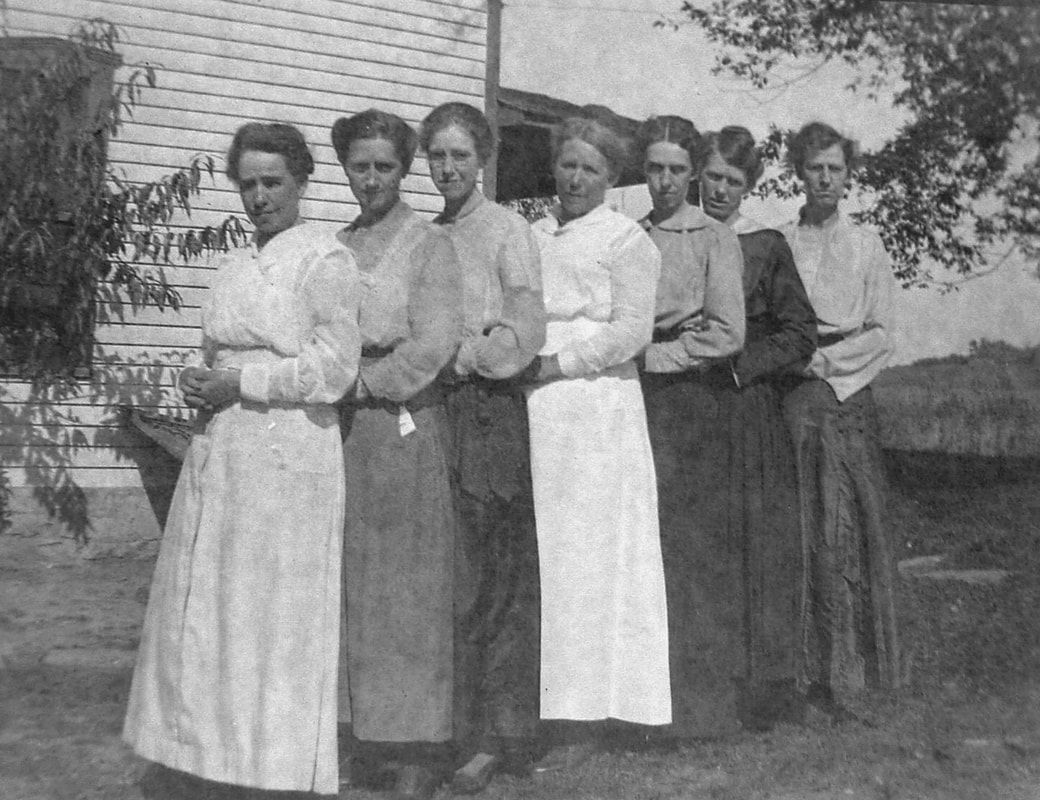 The Wynkoop sisters in Madison County, Iowa, circa 1910.[1] We don't know exactly who is who, but are certain that they are not standing in birth order. Their names, youngest to oldest, were: Blanche, Pearl, Grace, Louie, Virgie, Aileen, and Anna. I suspect that they are in this order, except that Anna and Louie have swapped places - this would put Anna in the middle and Louie on the far right. This could have been taken in 1913, after Blanche and Anna were married - which would explain their identical white dresses. My children's fourth great-grandparents, Simeon and Mary Josephine Armstrong Wynkoop, had eleven children - eight girls (one died as an infant), and three boys.[2] Of their seven adult daughters, three never married: Aileen (2nd child), Louie Ethel (7th child), and Olive Grace (8th child). Additionally, their eldest son/3rd child, William Garrett never married. He farmed the family's land, and apparently lived in his mother's household (along with sisters Aileen and Louie), his entire life.[3] Simeon, a veteran of the Civil War, died in 1899, when the youngest child was just eight years old.[4] The family stayed close together. One year later, in the 1900 census, Mary J. Wynkoop's household contained all ten children, including the eldest, Anna Laura, aged 31.[5] Anna was a dressmaker, and narrowly missed being counted with the other "maiden aunts." A 1913 marriage record indicates that she and her youngest sister, Zella Blanche, were married on the same day - February 26th.[6] Anna, at the age of 45, was married to John C. Cook, and Blanche, at the age of 22, to Marion W. Wright. I'm sure you are now very curious to learn more about our three unmarried sisters! I've been fortunate to have access to digital archives of the Earlham Echo - their local newspaper - and have learned so much about the Wynkoops and other local families by reading obituaries and other tidbits in this paper. Just as you might have expected for unmarried women in this time and place, two of the three sisters: Aileen and Grace - were both schoolteachers. Aileen lived to the age of 83. From her obituary:[7] "Allie's life has been one of service. She spent more than fifty years teaching in public schools. From her girlhood days she has taught Sunday School classes... she loved teaching, whether day school or Sunday. She was always busy, either with reading or some type of hand work." Grace lived to the age of 76. From her obituary:[8] "She attended the public schools of Madison county, graduating from the Earlham Academy in 1905. She attended Simpson College and Drake University where she received her degree. She taught school in Marne and Boone, then in the Des Moines Public Schools for 41 years... Her Sunday School and church work were an important part of her life... Her life was one of service. Everyone shared in her thoughtfulness, her family and her friends." Finally, we have Louie. She died the day after her eightieth birthday, in 1961.[9] Unfortunately, that year is not represented in the digital archives of the Earlham Echo. I did locate earlier news articles about celebrations of her birthday, in 1959, and 1960 - they were quite the family gatherings! From her 79th birthday, in March 1960:[10] "Snowy Birthday Party for Louie Wynkoop: I found Louie in census records from 1900-1930.[11][12][13] (Curiously, I have not yet located Mary J. Wynkoop or her children, Aileen, William Garrett, or Louie in the 1940 census - still searching!) Louie was a student in 1900, and could read/write, but her occupation was "none" in 1910, 1920, and 1930. She was living with siblings in 1910 and 1920, and back in her mother's home by 1930 (with siblings). Other than that, she remains a mystery to me. I'm looking forward to learning more about Louie's story through future research. I appreciated the chance to learn more about the Wynkoop family this week, and particularly the unmarried sisters: Aileen, Louie and Grace. It is so easy to overlook the lives of people who have not produced descendants to remember them in family histories, but their lives were often rich and full of service to society. Aileen and Grace both had a great impact on the lives of hundreds of children through their work as teachers, and also played an important role with their many family members and surrounding community. In addition, it is easy to see from newspaper reports that Louie was also loved and celebrated by her family and neighbors. I'm happy to be able to share their stories here. *Information gathered about the children of Simeon and Mary J. Armstrong Wynkoop from the Earlham Echo and sources specified below: 1. Anna Laura Wynkoop (b. 1868) (dressmaker) - married John C. Cook, 24 Feb. 1913 2. Aileen Wynkoop (b. 1870) (unmarried, schoolteacher) 3. William Garrett "Garry" Wynkoop (b. 1872) (unmarried, farmer) 4. Clyde Amendal Wynkoop (b. 1874) - married Orilla S. Feitz, 25 Feb. 1903 5. Virginia "Virgie" May Wynkoop (b. 1876) - married Hayse H. Hamilton, 16 Sep 1903 6. Zenis Alva Wynkoop (b. 1878) - married Minnie E. McComb 7. Louie Ethel Wynkoop (b. 1881) (unmarried) 8. Olive Grace Wynkoop (b. 1883) (unmarried, schoolteacher) 9. Cleo Pearl Wynkoop (b. 1886) - married C. Leroy Price 10. Infant daughter (born/died ca. 1889) 11. Zella Blanche Wynkoop (b. 1891) - married Marion W. Wright, 24 Feb. 1913 1. Photo of the Wynkoop Sisters, circa 1910, digital image, shared with the author by James Nugent.
2. "Mary J Wynkoop Died at Age of 92," Earlham Echo (Iowa), Thursday, 23 October 1941, page 1, column 2; database with images, "Digital Archives of the Earlham Echo," Community History Archive (http://earlham.advantage-preservation.com : accessed 8 April 2018). 3. 1930 U.S. census, Madison County, Iowa, population schedule, Earlham, ED 13, sheet 4-A, dwelling 90, family 94, for Mary J Wynkoop, Aileen Wynkoop, William G Wynkoop, and Louie E Wynkoop; database with images, Ancestry (www.ancestry.com : accessed 8 April 2018); citing National Archives and Records Administration (NARA), microfilm publication T626, roll 666. 4. Madison County, Iowa, Probate Case Files, 1851-1918, Case 1398-1413 (1899), for Simeon Wynkoop, case 1413, filing date 2 August 1899, petition papers; database online, "Iowa, Wills and Probate Records, 1758-1997," Ancestry (www.ancestry.com : accessed 9 April 2018). 5. 1900 U.S. census, Madison County, Iowa, population schedule, Madison Township, enumeration district (ED) 29, sheet 13A (penned), dwelling 267, family 276, for Mary J Wynkoop (incorrectly indexed as "Wyncoop") family; database with images, Ancestry (www.ancestry.com : accessed 8 April 2018); citing National Archives and Records Administration (NARA), microfilm publication T623, roll 445. 6. "Iowa, Marriage Records, 1880-1940," volume 449 (Emmet-Muscatine), Madison County, Marriage Returns for Fiscal Year Ending 30 June 1913, page 61-1C57 (stamped), License 432 for Marion W Wright and Zella B Wynkoop, and License 533 for John C Cook and Anna L Wynkoop; database with images, Ancestry (www.ancestry.com : accessed 8 April 2018); citing Iowa State Archives, Des Moines, Iowa. 7. "Obituary: Aileen Wynkoop," Earlham Echo (Iowa), Thursday, 29 April 1954, page 1, column 3; database with images, "Digital Archives of the Earlham Echo," Community History Archive, Advantage Preservation (http://earlham.advantage-preservation.com : accessed 8 April 2018). 8. "Obituary: Olive Grace Wynkoop," Earlham Echo (Iowa), Thursday, 30 June 1960, page 1, column 5; database with images, "Digital Archives of the Earlham Echo," Community History Archive, Advantage Preservation (http://earlham.advantage-preservation.com : accessed 8 April 2018). 9. Find A Grave, database and images (https://www.findagrave.com : accessed 8 April 2018), memorial page for Louie Wynkoop (16 Mar 1881–17 Mar 1961), Find A Grave Memorial no. 8122317, citing Fairview Cemetery, Madison County, Iowa; photo credit William Johnson. 10. "Snowy Birthday Party for Louie Wynkoop," Earlham Echo (Iowa), Thursday, 24 March 1960, page 1, column 4; database with images, "Digital Archives of the Earlham Echo," Community History Archive (http://earlham.advantage-preservation.com : accessed 8 April 2018). 11. 1910 U.S. census, Tripp County, South Dakota, population schedule, White River, ED 113, sheet 1-B (penned), dwelling 24, family 24, for Louie Wynkoop; database with images, Ancestry (www.ancestry.com : accessed 8 April 2018); citing NARA, microfilm publication T624, roll 1487. 12. 1920 U.S. census, Polk County, Iowa, population schedule, Des Moines City Ward 2 (6th Precinct), ED 109, sheet 13A (penned), dwelling 286, family 289, for Louise Wynkoop (incorrectly indexed as "Wynekoop"); database with images, Ancestry (www.ancestry.com : accessed 8 April 2018); citing NARA, microfilm publication T625, roll 508. 13. 1930 U.S. census, Madison Co., Iowa, Earlham, ED 13, sheet 4-A (penned), dwell. 90, fam. 94, Louie E Wynkoop. Ah, the old homestead... Like many from "out West," my people have been on the move almost continuously from one generation to the next, on all sides. We keep track of where we have been by where the babies were born. If we do have a "home place," it has only been for 2-3 generations, at most, like the summer cabin my mother's grandfather built (but we no longer own). Wouldn't it be wonderful to have that mythical farm to return to, which has been in the family for hundreds of years? I'm sure it happens for some people, but not mine. So what's up with these photos, then? Well, there is a place in Utah where my husband's mother's family still gathers (I'm not revealing details to protect their privacy). It is the place where their first immigrant ancestors settled in 1868, and somehow there is still a family member who lives there. We had the opportunity to visit with my mother-in-law, and my husband's brother's family, back in October 2013, and that is where and when I took the above photos. While this was the family's second "home" since their first arrival - the first being just down the road - it was the place that my mother-in-law remembers gathering with her cousins and extended family. It really is a magical place. Our kids, and their cousins, had a great time jumping on the trampoline, and discovering one of my favorite Utah rivers. What a treasure for this family!
A few more thoughts on the topic of family and land... Since I had the chance to go through Salathiel Stanley's Homestead records, I've been hungry to find more. I was fortunate that his documents were part of a collection on Ancestry. I've since found another ancestor on that side who successfully received land through the Homestead Act, but, unfortunately, since his land was in Missouri, not Nebraska, his records are only available through the National Archives. Maybe a trip to Washington, D.C. for our next Spring Break is in order? I just returned from this year's Spring Break (that's why I'm a little behind on posting), where I was searching for another type of homestead - this time for a Loyalist land grant in Ontario, Canada. I still haven't located the exact site (I'm so close - looking forward to sharing more soon!), but we did drive around the vicinity to get a feel for it. (We also popped into the Lexington & Addington County Museum & Archives, which I highly recommend!) I love visiting places where I know my ancestors once lived - where they worked, where they walked. It gives me so much more perspective on what they experienced, and what they left behind in their continuous search for just the right spot. I think, in the case of both of my Loyalist ancestors, John Ogilvie and James Lake, they were given land in Nova Scotia and Ontario, on thin soil, in cold, wet conditions, as compensation for the rich farmland they left behind in Georgia and New York. Although in both cases, where they landed was beautiful, wild countryside, after visiting I understand why their children heeded the call to move West (and South), for warmer conditions and better land. |
AuthorI'm Ginger Ogilvie, and I am absolutely, hopelessly hooked on genealogy! Archives
February 2023
Categories
All
© Keep Family History Services 2024
|
Proudly powered by Weebly

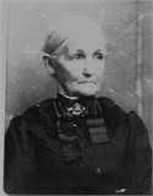
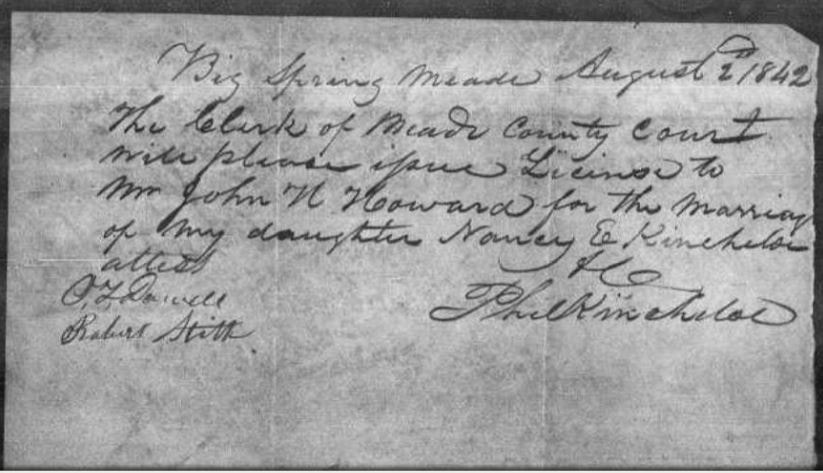
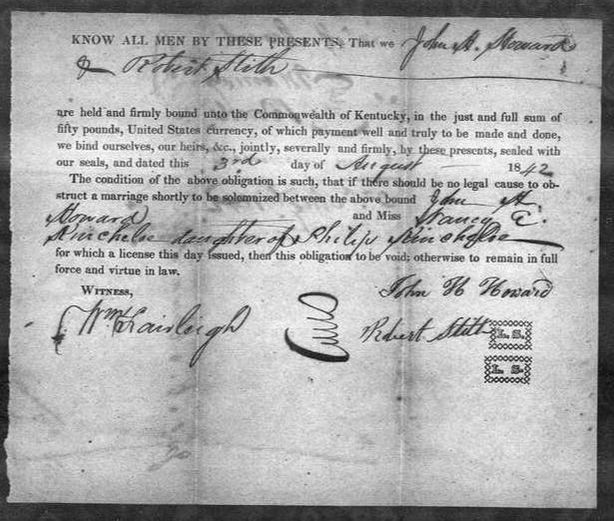
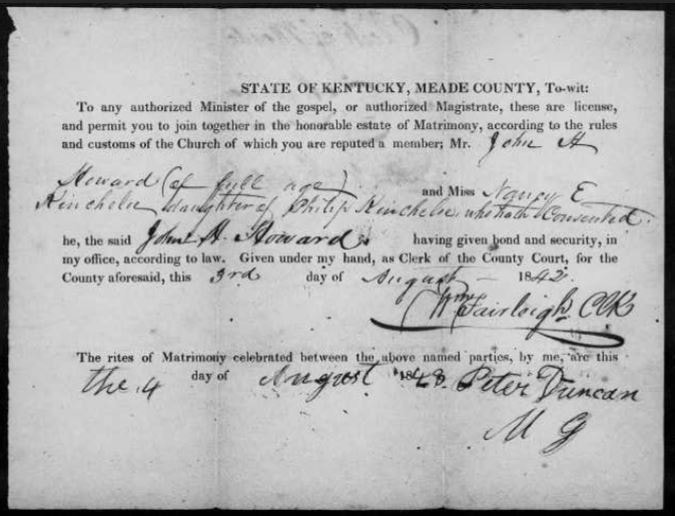
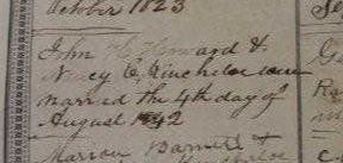
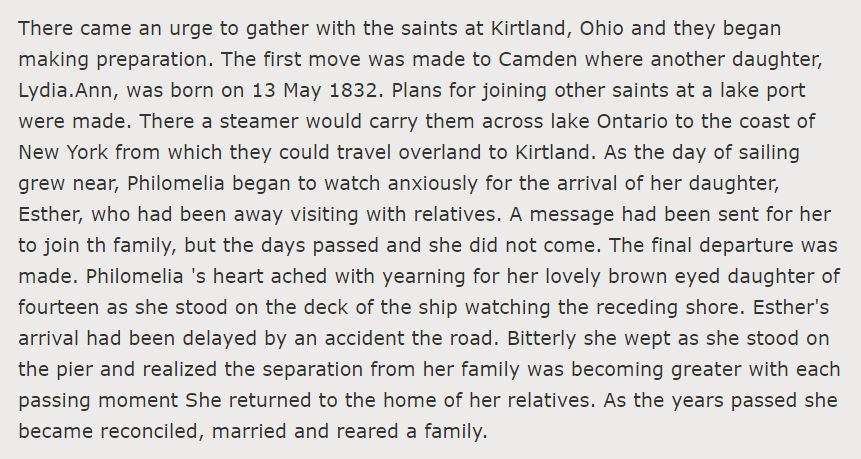
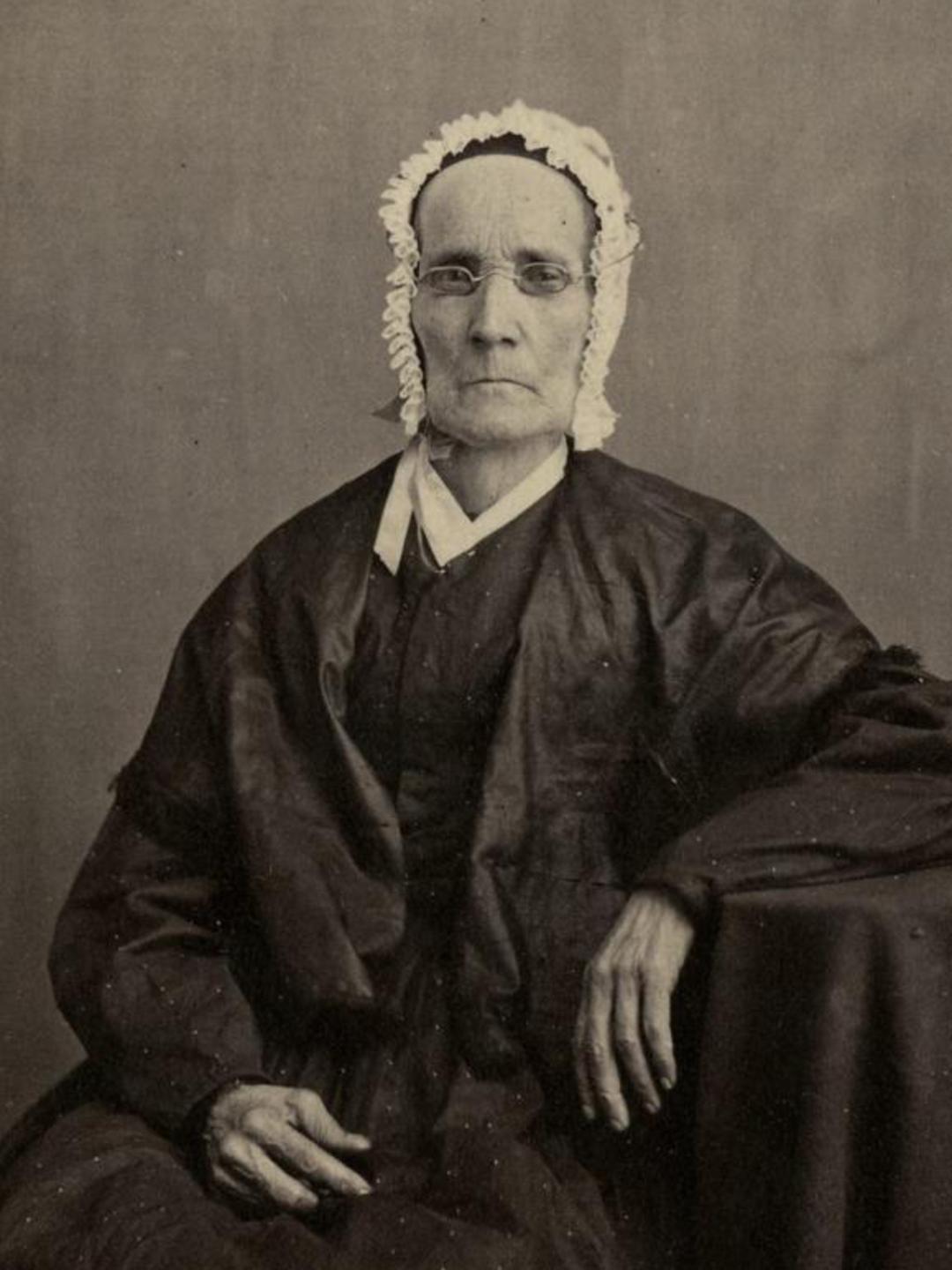
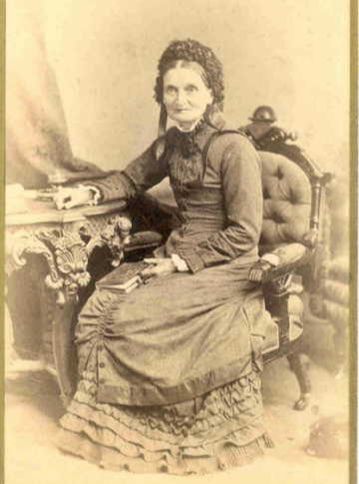
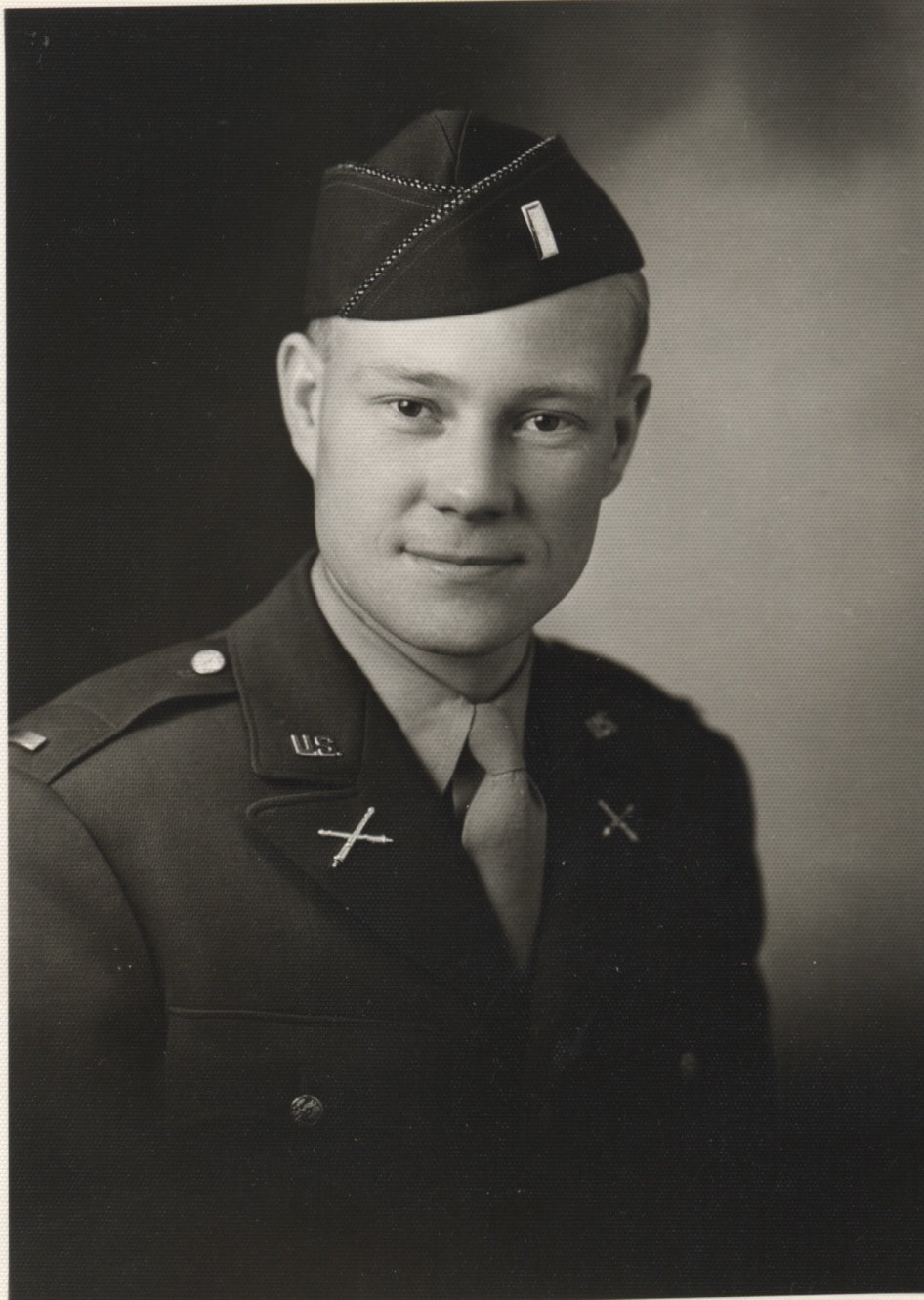
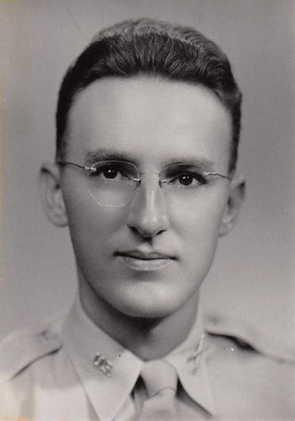
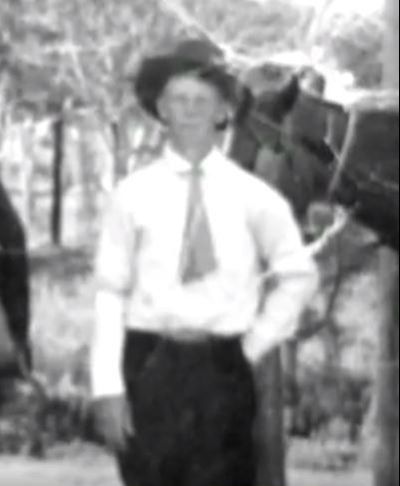

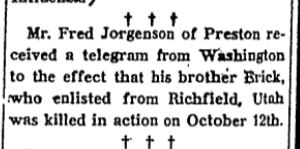
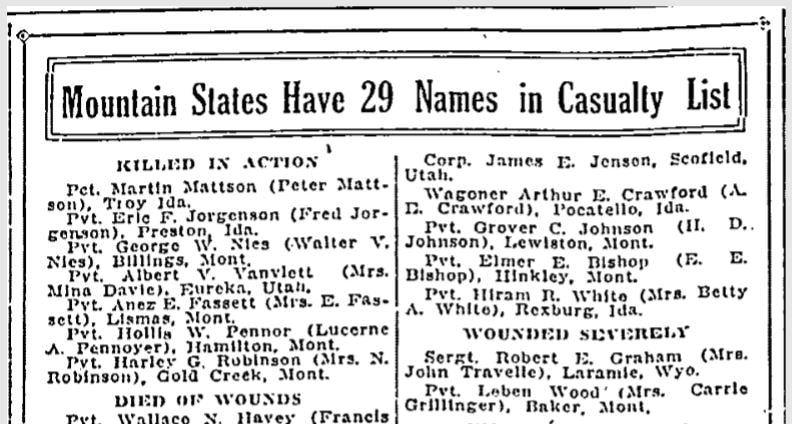
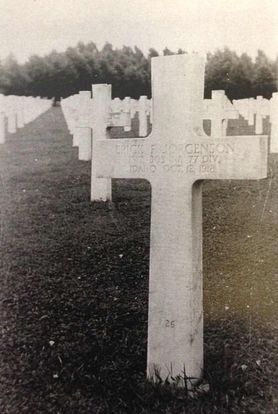
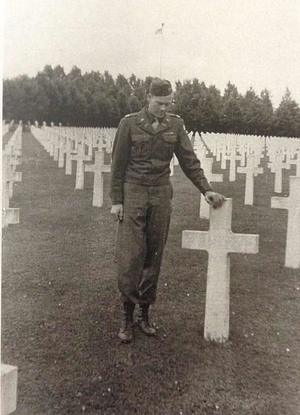
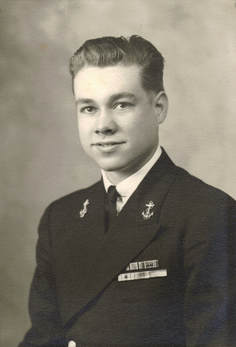
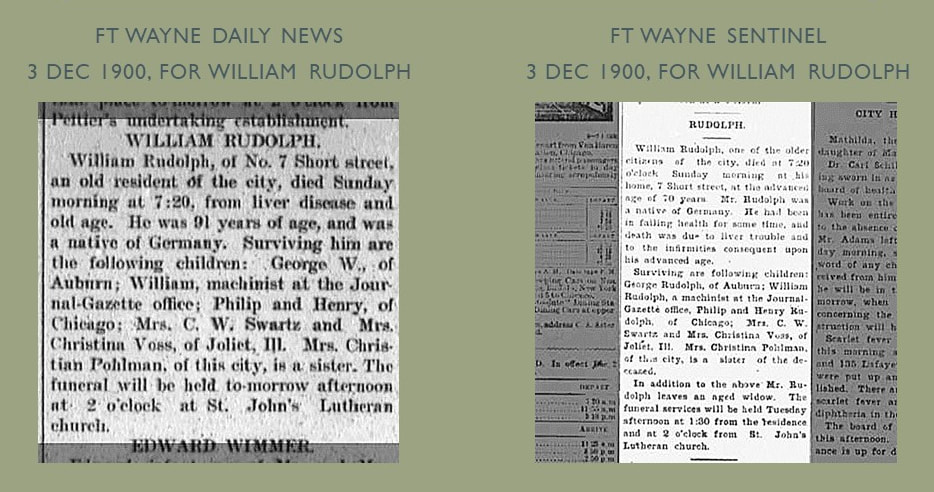
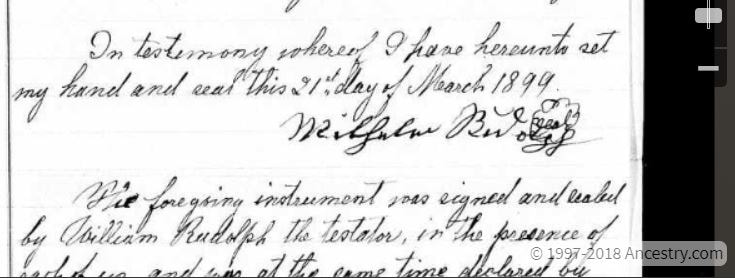
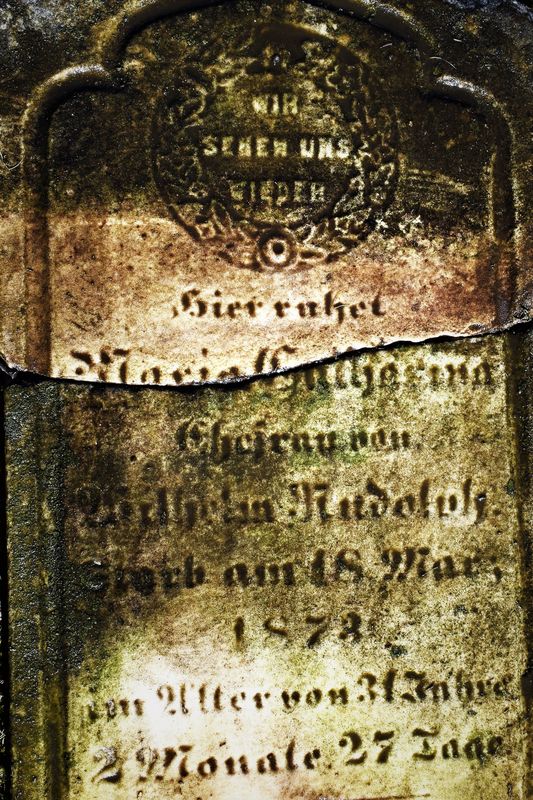
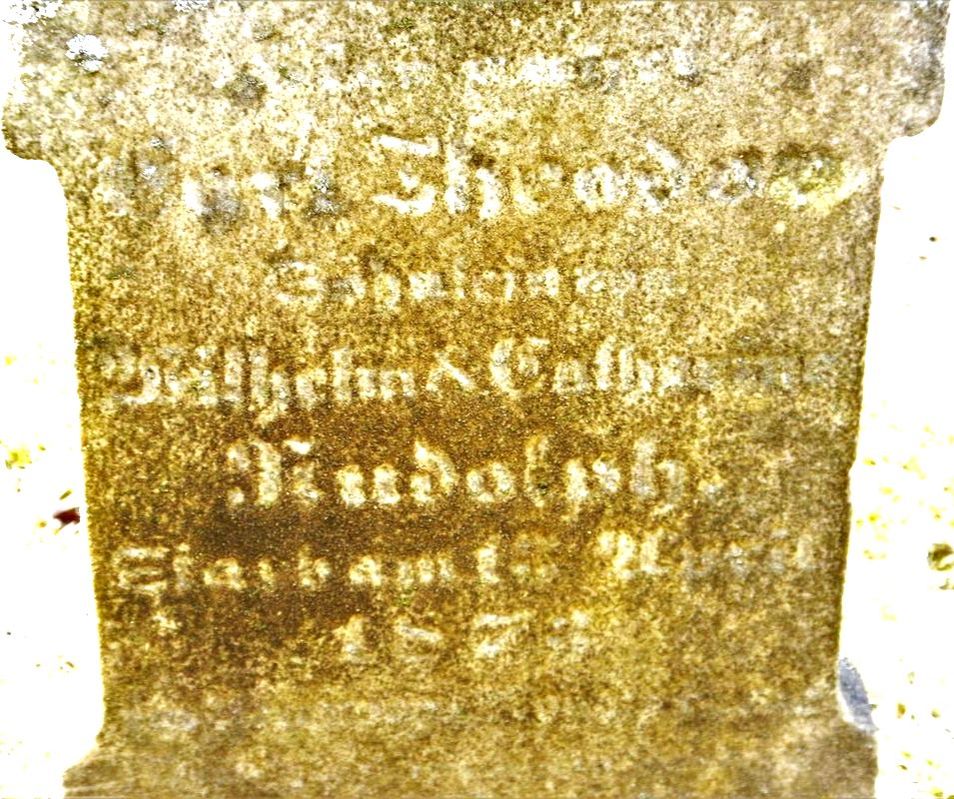
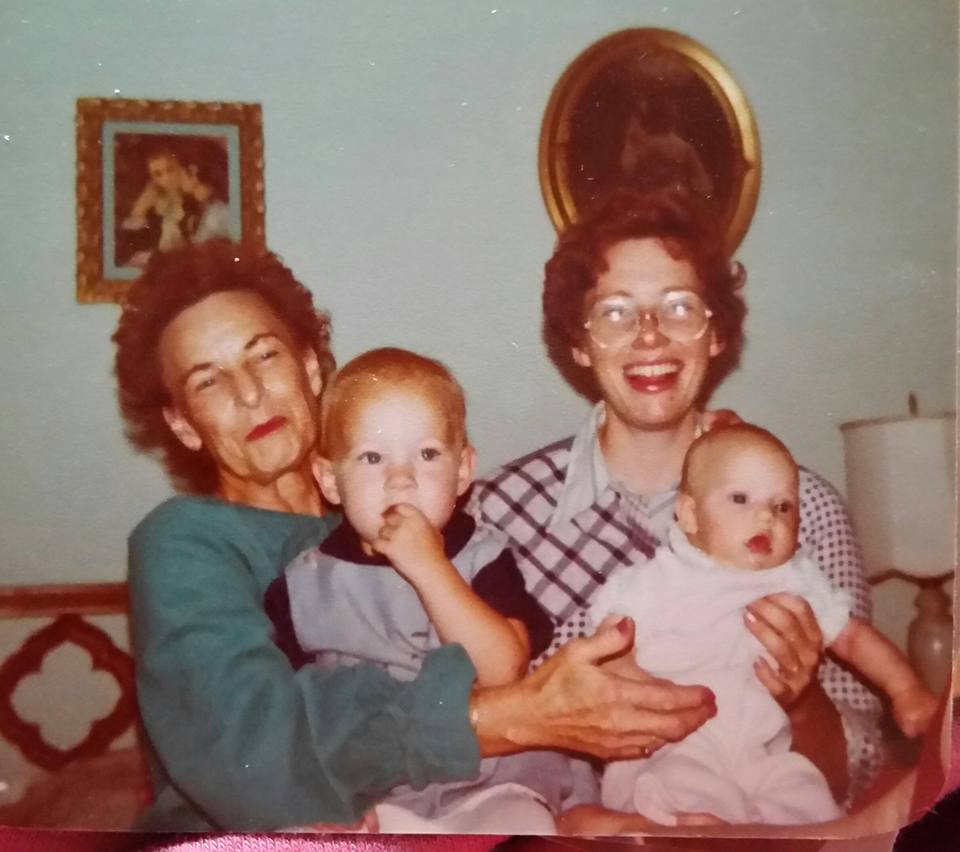
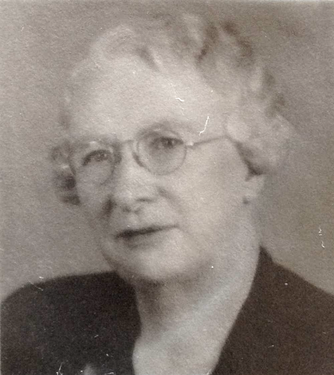
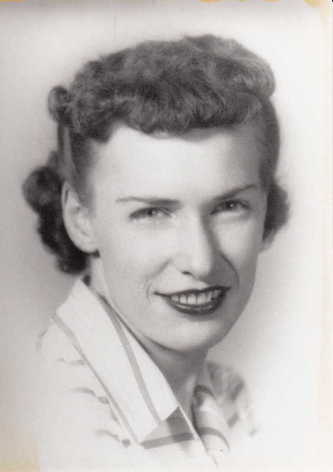
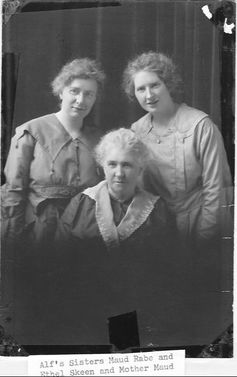
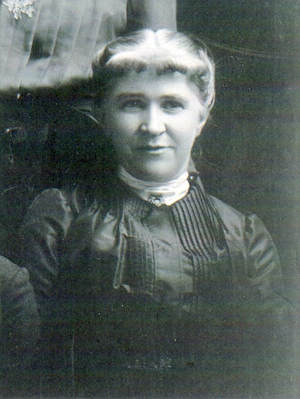
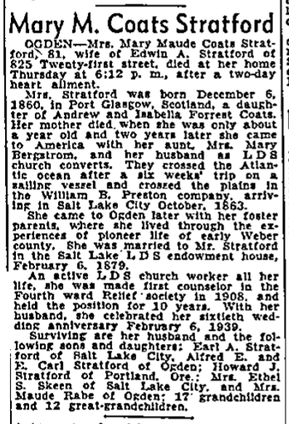
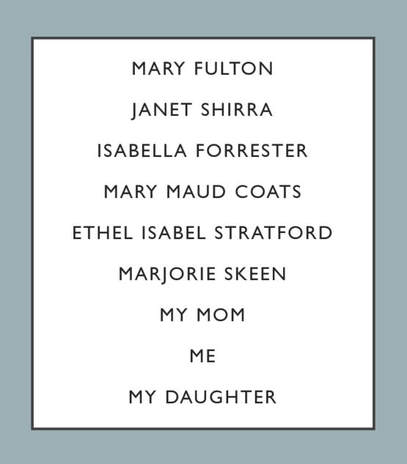
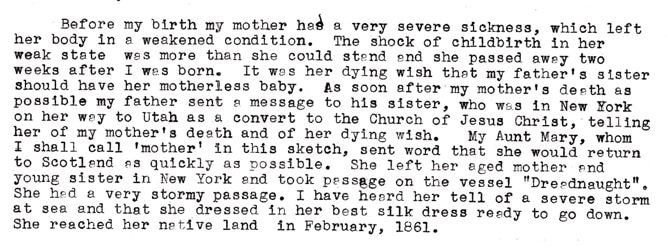
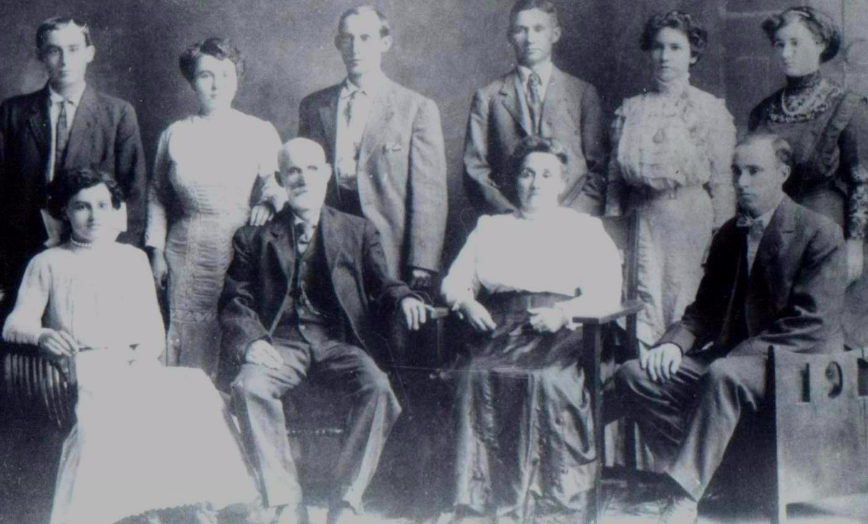
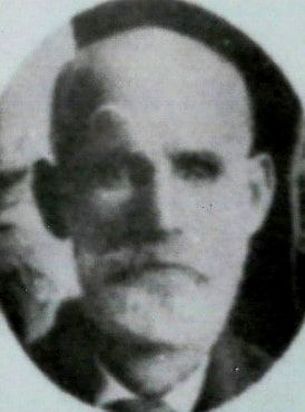
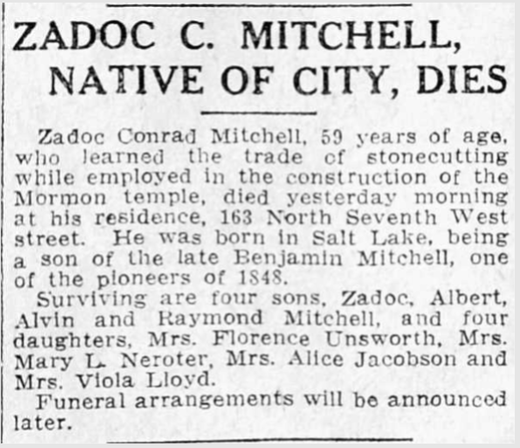
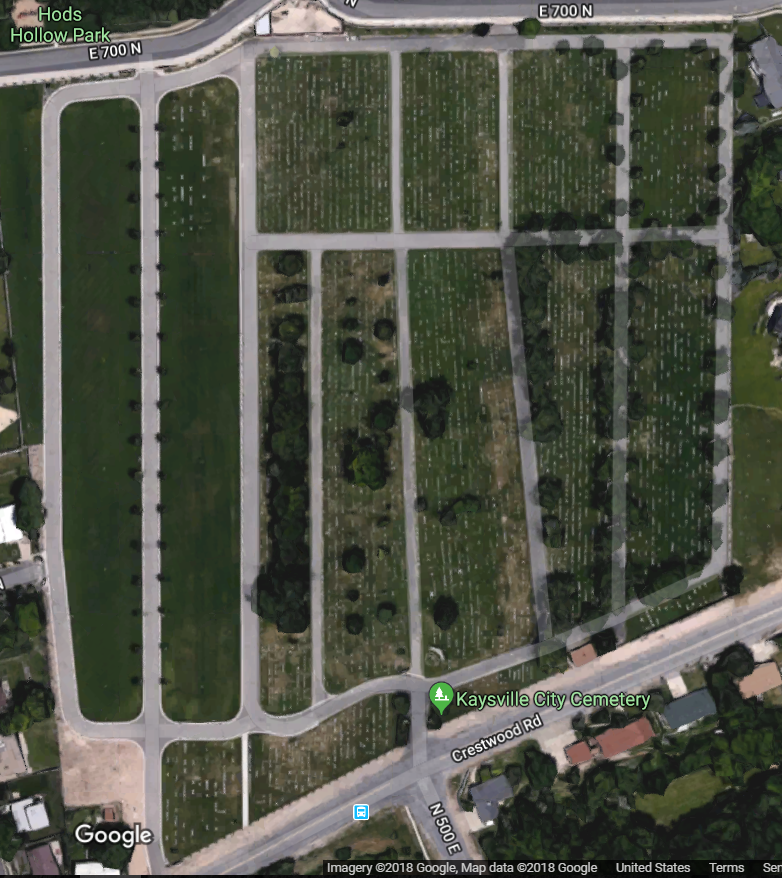
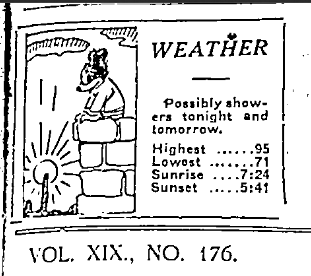
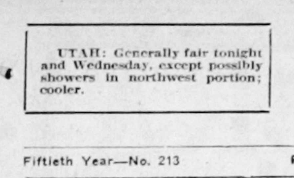
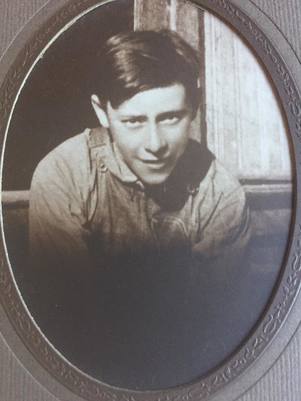

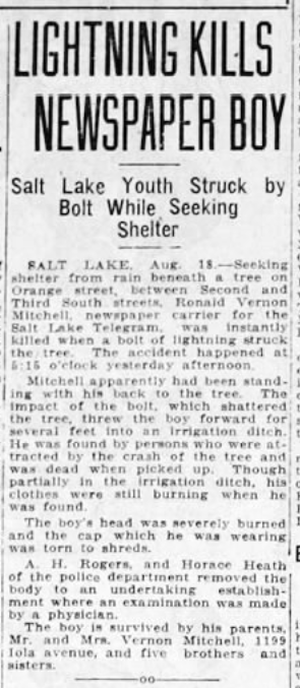

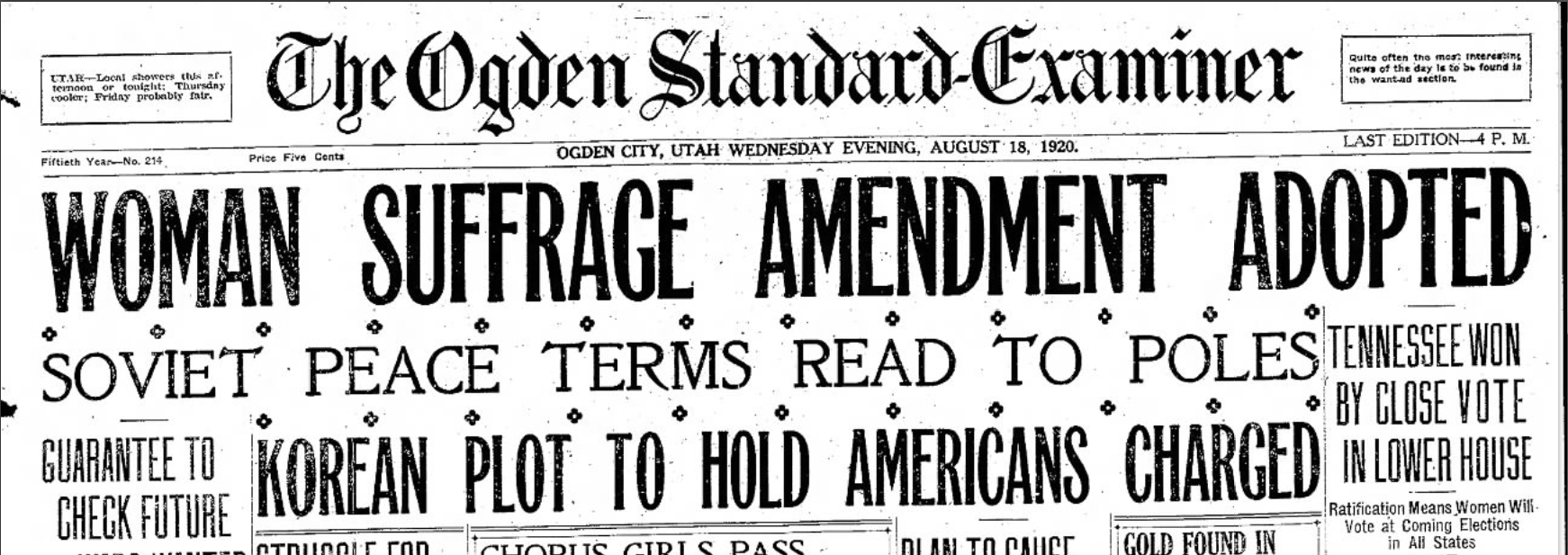

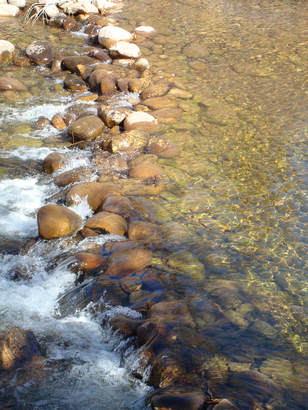
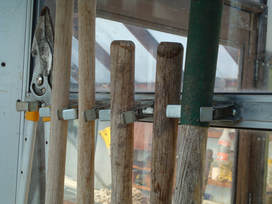
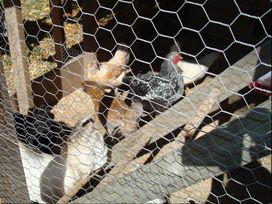
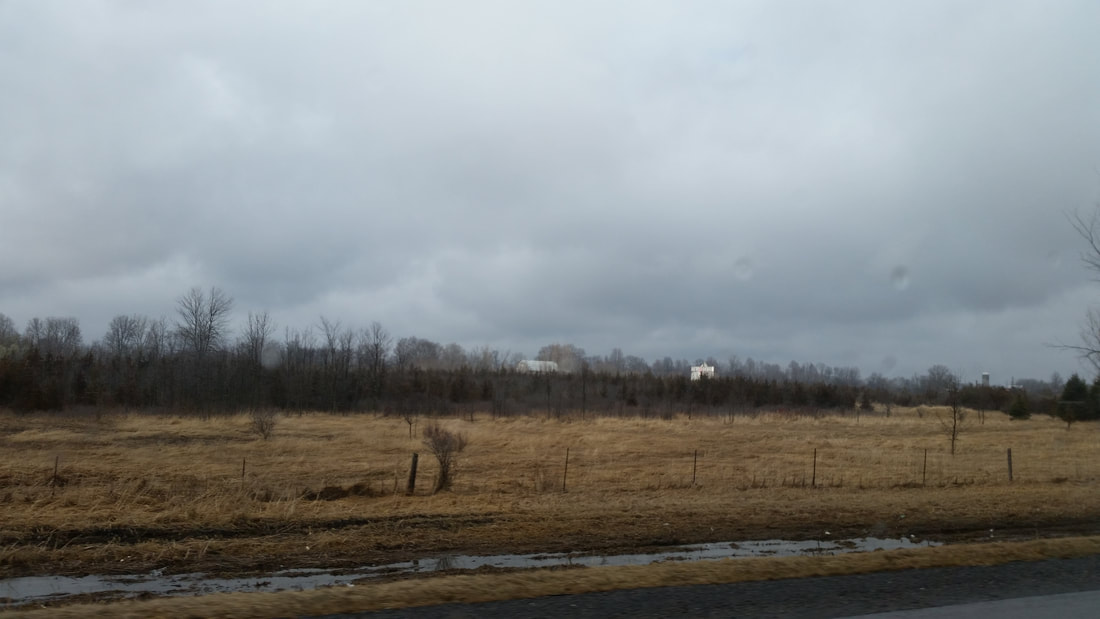
 RSS Feed
RSS Feed